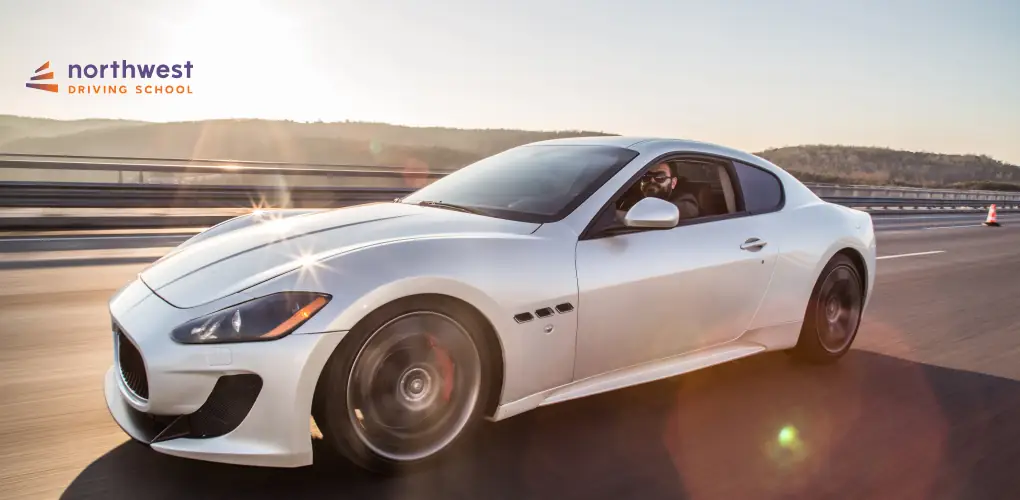- Driving School
Why Learning to Drive a Tesla Is Different from Traditional Cars

Electric vehicles are changing the way people learn to drive, and Tesla is one of the most recognized names leading that change. More driving schools are now adding Tesla cars to their training programs because of their unique features and advanced technology.
Learning to drive a Tesla is not the same as driving a traditional gas-powered vehicle. The controls, acceleration, and braking feel different, and the car’s systems can help make driving smoother and safer.
This blog will explain what makes the experience unique, how it compares to learning in a gas-powered car, and why it can prepare you for both electric and traditional vehicles. So if you are curious about the difference, this is where your answer begins.
Table of Contents
Understanding Electric Vehicle Basics
Learning how to drive a Tesla gives you a clear view of how electric vehicles work. There is no gas engine. The car runs only on electricity, so it feels different from the start. You will notice instant torque, which means the vehicle moves quickly and smoothly when you press the accelerator.
Then there is regenerative braking. It slows the car as soon as you lift your foot, unlike using regular brakes in a gas-powered vehicle. These features make driving a Tesla a unique experience and help you prepare for the future of transportation.
Minimalist Controls and Digital Dashboard
When you learn to drive a Tesla, you will notice the controls are different from those of most cars. Instead of many physical buttons, most functions are on a large touchscreen in the center. This screen shows your speed, navigation, and car settings in one place.
You do not have to look around for different controls. It can make the car feel simpler, but it also means you need to get used to tapping the screen instead of pressing buttons. Learning in this setup can help you focus more on the road while still having important information within easy reach.
Autopilot and Advanced Driver Assistance Systems (ADAS)
When you train in a Tesla, you may notice it has Autopilot and Advanced Driver Assistance Systems (ADAS). These systems can help with steering, speed control, and parking. They are designed to make driving easier, but they still require your attention. Your instructor will show you how to use these features safely. Then, you will practice using them in different driving situations.
- Lane keeping helps you stay centered in your lane.
- Adaptive cruise control adjusts your speed based on traffic.
- Self-parking assists when entering or leaving a parking space.
Even with automation, you must develop strong manual driving skills. Technology can help, but it cannot replace your judgment and quick reaction. Instructors will remind you to stay alert and keep your hands on the wheel. This way, you can use ADAS as a helpful tool while still being ready to take complete control of the car at any moment.
Different Driving Feel and Noise Level
When you drive a Tesla, the first thing you may notice is the quiet cabin. There is no engine noise, so the usual sound cues you rely on for speed are missing. This can change how you judge your driving pace. You will need to pay more attention to the speedometer and road conditions.
The car also delivers power in a smooth, steady way. There are no gear shifts or sudden surges, so acceleration feels more controlled. This can make driving comfortable, but it also requires you to stay aware of your speed. Without the noise and vibration of a traditional engine, it is easy to underestimate your speed.
Instructors will guide you on building habits that keep your awareness sharp, such as regular speed checks and monitoring your surroundings. Over time, you will learn to adjust and drive confidently in this quieter, smoother environment.
Charging vs. Fueling
Charging a Tesla car is different from the traditional method of fueling a vehicle. Instead of filling up at a gas station in minutes, you will need to consider battery range, charging stations, and charging time.
Charging can be done at home, at public charging stations, or at fast-charging locations called Superchargers. Each option has different speeds and costs. Unlike gas prices, electricity rates can vary depending on where and when you charge.
Conclusion
Driving a Tesla is more than just passing a test. It is about preparing for a future where electric vehicles and intelligent systems are standard on the road. You will build skills in managing new technology, understanding battery use, and adapting to a different driving feel. These abilities will stay useful as the industry changes.
Therefore, embrace the differences and see them as a chance to grow as a driver. The knowledge you gain today will guide you for years ahead. Enroll now at Northwest Driving School and start your journey toward driving with confidence in the future of transportation.


